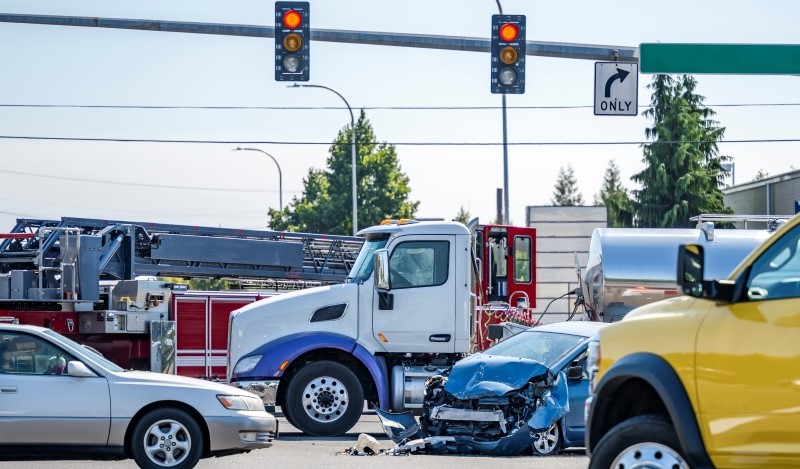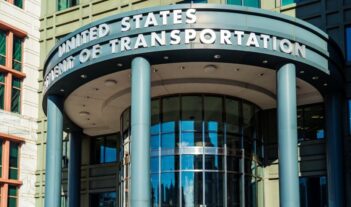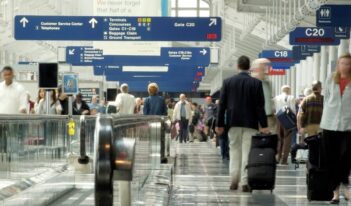
Innovations in technology and infrastructure can improve safety in shipping industries.
Apart from sensational reporting of mishaps, plane and train accidents and deaths have plummeted in the last 40 years. Road deaths, however, have increased in recent years, even when accounting for an increase in the total number of drivers.
In an earlier article, I explored the role of professional practices and safety culture in reducing deaths and injuries in U.S transportation. But public policy choices can also impact infrastructure and innovations in freight rail and trucking, two industries which compete to ship goods, but each of which have different regulatory regimes.
Without the trend of ridesharing, the increase in road deaths in recent years might be even more pronounced. It appears that ridesharing, for example, has reduced alcohol-related accidents and is associated with a 5.4 percent decrease in U.S. traffic fatalities where the service is allowed. Based on conventional estimates of the statistical value of life, ridesharing results in life-saving benefits of $6.8 billion.
Importantly, ridesharing drivers report practicing technical, social, and physical attributes of safety culture. Professional truck drivers also practice safety culture. There are, however, significant deaths related to trucking, particularly with large commercial trucks. For example, the U.S. Department of Transportation reports 533,796 accidents for that vehicle category and some 5,000 deaths in 2021.
One reason researchers posit for the increase in the roadway death rate is the post-pandemic shipping boom, which brought more vehicles, shipments, and distribution centers to the market and, accordingly, resulted an increase of commercial trucking in cities, residential neighborhoods, and mixed-use locations with pedestrians and more traffic complexity.
Another reason for the high number of deaths on roads could be that truck driver compensation models have recently changed. Drivers may now experience reduced total mileage and payment because of increased deliveries in cities, and because they are now compensated based on deliveries made, rather than distance travelled. This could spur drivers to increase their driving speed to make deadlines and on-time deliveries.
Safety culture matters too. Some corporate owners focus on compliance, employee satisfaction, and reducing costs and litigation, while other owners and stakeholders may have different priorities.
Safety culture is influenced by technological innovation. Vehicles are increasingly equipped with intelligence systems and sensors which collect, report, and implement data based on traffic patterns, weather conditions, and vehicle performance. These systems can help slow down drivers, reduce congestion, optimize routes, and mitigate risks. Another class of tools enhances predictive capabilities by crunching data to identify potential issues, such as vehicle maintenance, before they lead to accidents.
Automation can also improve safety culture. Machines can now perform tasks that are susceptible to human error, and they can deter accidents with real-time alerts and even computer interventions. Such automation includes technologies such as collision avoidance systems, lane departure warnings, and adaptive cruise control, all of which improve situational awareness and accident prevention.
Notably, freight rail operators have invested billions of dollars over the last few decades to implement positive train control (PTC)—a system of automated train safety features—for greater safety and fuel efficiency. PTC offers valuable simulations in which train operators can learn. These technologies provide intelligence for coordinating intersecting rail lines, signaling, switching, routing, and facilitating other vital railway communications. In addition, they can provide analytics on defects, damaged rails, overheated bearings, equipment drags, rockslides, and other safety hazards. Importantly, PTC can stop a train when the system senses a life-threatening hazard.
Both rail and trucking companies pursue automation to improve safety and efficiency, but their rates of adoption differ. These technologies are mediated by organized labor demands. For example, a minimum two-person train crew mandate was imposed by the Federal Railroad Administration even though the agency offered insufficient evidence that the rule improved safety. Similarly, the climate-friendly, autonomous “supertrucks” that the U.S. Department of Energy and private investors promised have yet to emerge.
But just as technology promises to improve safety, so, too, can the design, use, and ownership of infrastructure. A key characteristic of a given mode of transportation is its channel—such as rail or roadways—and whether it is fixed and exclusive, or publicly shared.
Consider a privately owned railroad versus a publicly owned road. The private railroad controls which trains run on its tracks and takes responsibility for its maintenance, whereas the public road can be used by all motorists, whether they are in large trucks, small cars, or motorcycles. Thus, the railroad can reduce accidents by limiting access and using standardized trains. Indeed, this concept underpins the “fixed guideway” model of mass transit. In addition, such systems are increasingly automated because the movements of trains can be programmed and controlled in advance.
Notably, there are different safety incentives with infrastructure that are privately maintained. For example, private owners bear ultimate liability for accidents that take place on their infrastructure, are insured against such accidents, and thus take steps to reduce them. This dynamic is evident in part in the improving safety record for freight rail, but also in continued private investment in building, maintaining, and upgrading privately held infrastructure. Indeed, freight rail remains the best-rated U.S. infrastructure, as graded by the American Society of Civil Engineers.
This experience with rail contrasts with the economics and incentives of trucking. Trucking companies do not own the highways; they may or may not contribute financially to road infrastructure through gas taxes or tolls, and such fees vary by location, the size of the truck, prevailing regulations, and so on. Road economics are complicated, and users of the largest vehicles do not necessarily bear the costs of upkeep, even if they create more wear and tear on roads and bridges.
Moreover, trucks congest roads as they compete for space with passenger vehicles. By contrast, private railroads enjoy a relative abundance of space on dedicated tracks used to ship large, heavy, and bulky items efficiently while avoiding towns and road delays.
Infrastructure and innovation are two elements to consider when making safety policy for highways and railroads. While trucks and trains compete to deliver many of the same goods, they operate under different regulations and regulatory authorities. These differences can create structural and distortive differences in pricing, efficiency, and competition. Regulation evolves over time to address problems, but it can also quickly become obsolete because of technological advancements and foreign competition over which U.S. regulators may or may not have jurisdiction.
There are dozens of federal agencies which oversee bits and pieces of U.S. transportation. These asymmetries become points of arbitrage for competing industries. Trucking enjoys a relatively light regulatory touch and ease of market entry when compared to freight rail, which must uphold many obsolete common carrier rules imposed more than 150 years ago. Ironically, common carriage can reduce safety by forcing freight rail companies to carry dangerous cargo at below the rate of its true economic cost.
One idea to improve transportation safety would be to adopt a unified regulatory framework with the same rules for competing industries and a greater focus on reducing accidents and deaths. The rules for freight rail and trucking could be based on a licensing and liability regime to align incentives so operators would hold responsibility for the safety of their respective transportation channels. Automation would be accelerated, while irrational rules like the two-man crew rule would be rescinded. A movement toward regulatory innovation would also improve the likelihood that market competition, and not regulators, would determine shipping prices.




